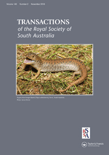
TRANSACTIONS OF THE ROYAL SOCIETY OF SOUTH AUSTRALIA
Scope & Guideline
Championing excellence in multidisciplinary research.
Introduction
Aims and Scopes
- Biodiversity and Ecology:
Research that explores the diversity of flora and fauna in South Australia, including studies on species interactions, pollination, and the effects of environmental changes on ecosystem dynamics. - Geological and Paleontological Studies:
Contributions that examine geological formations, fossil records, and historical biogeography, providing insights into the Earth’s history and the evolution of life in the region. - Conservation Science:
Investigations focused on conservation strategies and the impact of human activities on natural habitats, emphasizing the importance of preserving South Australia's unique ecosystems. - Citizen Science and Community Engagement:
Studies that involve public participation in scientific research, highlighting the role of citizen science in biodiversity monitoring and environmental education. - Parasitology and Microbiology:
Research into the parasitic organisms affecting local wildlife, including detailed studies of helminths and their hosts, contributing to the understanding of disease dynamics in ecosystems. - Historical and Cultural Studies:
Papers that delve into the historical context of scientific discoveries, Indigenous connections to the land, and the socio-cultural aspects of science in South Australia.
Trending and Emerging
- Impact of Climate Change:
A growing number of studies are addressing the effects of climate change on local ecosystems, species distributions, and habitat viability, highlighting the urgent need for adaptive management strategies. - Citizen Science Initiatives:
There is an increasing trend toward involving the public in scientific research, with numerous papers focusing on citizen science projects that aim to enhance biodiversity monitoring and community engagement. - Conservation Genetics:
Research into the genetic diversity of species and the implications for conservation strategies is on the rise, aiming to inform management practices for endangered and endemic species. - Microbial Ecology:
An emerging interest in the roles of microbial communities within ecosystems, particularly regarding their interactions with larger organisms and environmental stressors, is becoming more prominent. - Land Use and Habitat Restoration:
Studies examining the impacts of land use changes and exploring strategies for habitat restoration and management are increasingly featured, reflecting a practical approach to conservation challenges.
Declining or Waning
- Traditional Taxonomy:
While taxonomy remains important, there seems to be a decreasing emphasis on purely taxonomic descriptions of species without broader ecological or evolutionary context. - Generalized Environmental Monitoring:
Research that focuses on broad environmental monitoring efforts without specific hypotheses or targeted studies appears to be less prevalent, as more focused and applied research gains traction. - Historical Archaeology:
Although historical connections to Indigenous cultures are still significant, detailed archaeological studies not directly linked to contemporary ecological or conservation issues seem to be less frequently published.
Similar Journals
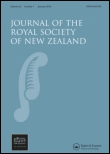
JOURNAL OF THE ROYAL SOCIETY OF NEW ZEALAND
Advancing Knowledge Across DisciplinesWelcome to the JOURNAL OF THE ROYAL SOCIETY OF NEW ZEALAND, a prestigious multidisciplinary publication hosted by Taylor & Francis Ltd. Since its inception in 1971, this journal has served as a vital platform for disseminating groundbreaking research across diverse fields, from the natural sciences to the humanities, contributing to its strong ranking within the top quartile (Q1) of multidisciplinary journals. With an impressive Scopus ranking of #28 out of 171 and an 83rd percentile placement, the journal is recognized for its high-quality contributions that advance knowledge and innovation. Though it currently does not offer Open Access options, its comprehensive scope and impactful publications make it an essential resource for researchers, professionals, and students alike, striving to push the boundaries of discovery and understanding. As we continue to progress through 2024, we invite you to engage with our diverse array of articles that reflect the vibrant research landscape of New Zealand and beyond.

INTERNATIONAL JOURNAL OF PLANT SCIENCES
Fostering interdisciplinary dialogue in plant research.The INTERNATIONAL JOURNAL OF PLANT SCIENCES, published by UNIV CHICAGO PRESS, is a leading journal dedicated to advancing knowledge in the fields of plant sciences and ecology. With an ISSN of 1058-5893 and an E-ISSN of 1537-5315, this journal has been a prominent platform for groundbreaking research since its establishment, featuring works from 1983 to present. It holds an impressive Q2 ranking in both Ecology, Evolution, Behavior and Systematics and Plant Science, reflecting its reputable standing within the academic community. The journal is well-regarded for its rigorous peer-review process and commitment to high-quality publication standards, making it a favored choice for researchers, students, and professionals eager to engage with the latest findings and innovative methodologies in plant research. While it does not currently operate under an Open Access model, the journal provides ample access options for institutions and individuals keen to explore its curated content. By presenting diverse studies that blend theoretical and practical insights, the INTERNATIONAL JOURNAL OF PLANT SCIENCES plays a critical role in fostering interdisciplinary dialogue and advancing the frontiers of plant science research.

People and Nature is an esteemed journal published by WILEY that has been a cornerstone in the field of ecology, evolution, behavior, and systematics since its inception in 2019. Featuring an impressive impact factor and categorically ranked in the Q1 quartile for 2023, this Open Access journal ensures broad dissemination of high-quality research, making it invaluable for researchers, practitioners, and students alike. With a strong Scopus ranking of 39 out of 721 in its category, People and Nature seeks to advance understanding of the intricate relationships between humans and the natural world. Operating from the United Kingdom, this journal offers vital insights into sustainable practices and environmental stewardship, urging the scientific community to foster a deeper connection with our ecosystems. By providing a platform for innovative and multidisciplinary research, it plays a pivotal role in addressing the pressing challenges faced by nature and society today.
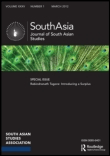
SOUTH ASIA-JOURNAL OF SOUTH ASIAN STUDIES
Connecting Researchers to the Heart of South Asian StudiesSOUTH ASIA-JOURNAL OF SOUTH ASIAN STUDIES, published by Routledge Journals, Taylor & Francis Ltd, stands as a seminal platform for scholarly discourse in South Asian studies. With a proud history dating back to 1971, the journal provides a comprehensive examination of the region's multifaceted cultural, historical, and socio-political dynamics. Renowned for its rigorous peer-reviewed articles, it is listed in the prestigious Q1 category in Cultural Studies and History and has garnered respect across the social sciences, indicated by its competitive rankings in Development and Sociology and Political Science. Although it does not currently offer open access, the journal's influence is evident, boasting an impressive impact in its fields as indicated by its Scopus rankings, with a noteworthy 88th percentile in History. Targeted towards researchers, professionals, and students alike, SOUTH ASIA-JOURNAL OF SOUTH ASIAN STUDIES is essential for anyone seeking to deepen their understanding of South Asian complexities and contribute to ongoing academic conversations.
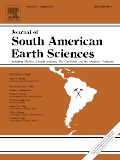
JOURNAL OF SOUTH AMERICAN EARTH SCIENCES
Fostering Insights into Earth's Dynamic ProcessesJOURNAL OF SOUTH AMERICAN EARTH SCIENCES is a premier interdisciplinary journal dedicated to publishing high-quality research in the fields of Earth-Surface Processes, Geology, and Paleontology, making it an essential resource for scientists and researchers focused on South American geology and its diverse geological phenomena. Published by Pergamon-Elsevier Science Ltd in the United Kingdom, this journal has been instrumental in disseminating groundbreaking studies since 1988, showcasing contributions that push the boundaries of knowledge in Earth and Planetary Sciences. With an impressive Scopus ranking—positioning it in the 74th percentile for Paleontology and 71st for Geology—this journal not only reflects robust academic quality but also its commitment to addressing critical geological challenges in South America. Researchers will appreciate its objective of advancing understanding of geological processes while providing insights into past, present, and future Earth environments. Although available through traditional subscription models, the journal's vast repository of articles enriches the academic landscape, facilitating the sharing of vital research among professionals, students, and geological practitioners.

Conservation Letters
Transforming Insights into Action for Nature's FutureConservation Letters, published by Wiley, is a premier peer-reviewed journal dedicated to advancing the field of conservation science. As an Open Access journal since 2015, it provides researchers, practitioners, and policymakers with immediate access to cutting-edge research and insights that shape effective conservation strategies globally. With an impressive impact factor and a distinguished standing in the academic community—ranking in the Q1 category in disciplines such as Ecology, Evolution, and Nature Conservation—the journal plays a vital role in disseminating high-quality research that informs environmental practices. Based in the United States, it encompasses a broad scope of topics aimed at bridging scientific findings with real-world applications, effectively contributing to the understanding and preservation of biodiversity. Researchers looking to publish innovative work in an influential platform will find Conservation Letters an essential venue for ensuring their research reaches an engaged international audience.

NEW ZEALAND JOURNAL OF BOTANY
Exploring the Depths of Plant Science and EcologyThe New Zealand Journal of Botany, published by the esteemed Taylor & Francis Ltd, serves as a pivotal platform for disseminating significant research in the fields of Ecology, Evolution, Behavior and Systematics, as well as Plant Science. With a rich history dating back to 1963 and an impressive convergence extending to 2024, this journal has established itself as an essential resource for researchers and professionals dedicated to understanding the complexities of plant life and ecological systems in New Zealand and beyond. The journal is currently categorized in the Q3 quartile for both relevant disciplines as of 2023, reflecting its balanced influence within the global academic community. Although not an open access journal, it retains a significant impact factor, evidenced by its Scopus rankings, which place it within the top half of its categories. This makes it an invaluable tool for students, researchers, and academics aiming to engage with robust, peer-reviewed scientific findings and contribute to the evolving discourse surrounding botany and ecological research.
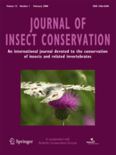
JOURNAL OF INSECT CONSERVATION
Fostering Knowledge for a World Rich in InsectsJOURNAL OF INSECT CONSERVATION, published by SPRINGER in Switzerland, is a leading peer-reviewed journal that focuses on the preservation and study of insect biodiversity and ecology. With an ISSN of 1366-638X and E-ISSN 1572-9753, this journal represents a vital resource for researchers and practitioners in the fields of Animal Science, Ecology, and Insect Science. The journal consistently ranks among the top quartiles, achieving Q1 status in Animal Science and Zoology and Q2 in other pertinent categories in 2023, according to Scopus rankings. This reflects its significant influence in the academic community, with a solid impact factor that highlights its importance in advancing the discourse on insect conservation. Though not an open access journal, it provides critical insights and innovative research findings from 1997 to 2024, making it an essential platform for those involved in the conservation of insect species and their habitats. As a scholarly resource, the JOURNAL OF INSECT CONSERVATION is dedicated to fostering knowledge dissemination and inspiring future research in pressing environmental issues.
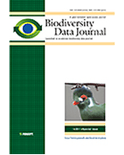
Biodiversity Data Journal
Empowering research with comprehensive biodiversity insights.Biodiversity Data Journal, published by PENSOFT PUBLISHERS, is a leading open-access platform that has been facilitating the dissemination of scientific knowledge since its inception in 2013. With a focus on enriching the fields of Agricultural and Biological Sciences, Animal Science and Zoology, Ecology, and Plant Science, this journal plays a pivotal role in promoting research outputs related to biodiversity, encompassing ecological data, species inventories, and conservation strategies. It has achieved commendable rankings in various categories, notably securing a Q2 rating in several key areas, indicating its growing influence within the academic community. The journal’s contribution to advancing the understanding of biodiversity is further enhanced by its commitment to open access, ensuring that vital research findings are widely accessible to researchers, professionals, and students worldwide. By publishing comprehensive datasets and innovative research, the Biodiversity Data Journal remains an essential resource for those looking to stay at the forefront of biodiversity science and environmental stewardship.

Earth and Environmental Science Transactions of the Royal Society of Edinburgh
Innovating solutions to global environmental challenges.Earth and Environmental Science Transactions of the Royal Society of Edinburgh is a prestigious journal published by Cambridge University Press, dedicated to advancing research in the field of Earth and planetary sciences, as well as environmental science. With its ISSN 1755-6910 and E-ISSN 1755-6929, the journal has established itself as a crucial platform for disseminating innovative research and comprehensive reviews since its inception in 2007. Positioned in the Q3 quartile for both Earth and Planetary Sciences and Environmental Science, it contributes significantly to the ongoing dialogue and development in these areas, boasting a Scopus ranking that reflects its commitment to scholarly excellence with an emphasis on interdisciplinary approaches and real-world applications. The journal is based in the United Kingdom, with its editorial office located at the Edinburgh Building, Shaftesbury Road, Cambridge. As an essential resource for researchers, professionals, and students alike, Earth and Environmental Science Transactions offers opportunities for open discourse on pressing environmental challenges, fortifying its role in fostering a deeper understanding of our planet's systems and their interconnectedness.